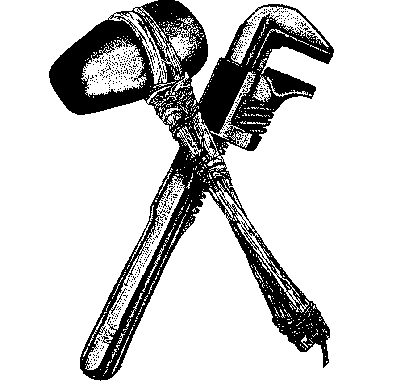|
Green Anarchism
Green anarchism (or eco-anarchism"green anarchism (also called eco-anarchism)" in ''An Anarchist FAQ'' by various authors.) is an anarchist school of thought that puts a particular emphasis on ecology and environmental issues. A green anarchist theory is normally one that extends anarchism beyond a critique of human interactions and includes a critique of the interactions between humans and non-humans as well. Beyond human liberation, green anarchist praxis can extend to some form of non-human, total liberation and an environmentally sustainable anarchist society. The two main tendencies of green anarchism are anarcho-primitivism, which offers a critique of technology and argues that anarchism is best suited to uncivilised ways of life, and social ecology, which argues that the hierarchical domination of nature by human stems from the hierarchical domination of human by human. Mid-20th century The English anarchist Ethel Mannin's 1944 book ''Bread and Roses: A Utopian Survey ... [...More Info...] [...Related Items...] OR: [Wikipedia] [Google] [Baidu] |
An Anarchist FAQ
An, AN, aN, or an may refer to: Businesses and organizations * Airlinair (IATA airline code AN) * Alleanza Nazionale, a former political party in Italy * AnimeNEXT, an annual anime convention located in New Jersey * Anime North, a Canadian anime convention * Ansett Australia, a major Australian airline group that is now defunct (IATA designator AN) * Apalachicola Northern Railroad (reporting mark AN) 1903–2002 ** AN Railway, a successor company, 2002– * Aryan Nations, a white supremacist religious organization * Australian National Railways Commission, an Australian rail operator from 1975 until 1987 * Antonov, a Ukrainian (formerly Soviet) aircraft manufacturing and services company, as a model prefix Entertainment and media * Antv, an Indonesian television network * '' Astronomische Nachrichten'', or ''Astronomical Notes'', an international astronomy journal * ''Avisa Nordland'', a Norwegian newspaper * ''Sweet Bean'' (あん), a 2015 Japanese film also known as ''An ... [...More Info...] [...Related Items...] OR: [Wikipedia] [Google] [Baidu] |
Genetic Engineering
Genetic engineering, also called genetic modification or genetic manipulation, is the modification and manipulation of an organism's genes using technology. It is a set of technologies used to change the genetic makeup of cells, including the transfer of genes within and across species boundaries to produce improved or novel organisms. New DNA is obtained by either isolating and copying the genetic material of interest using recombinant DNA methods or by artificially synthesising the DNA. A construct is usually created and used to insert this DNA into the host organism. The first recombinant DNA molecule was made by Paul Berg in 1972 by combining DNA from the monkey virus SV40 with the lambda virus. As well as inserting genes, the process can be used to remove, or "knock out", genes. The new DNA can be inserted randomly, or targeted to a specific part of the genome. An organism that is generated through genetic engineering is considered to be genetically modified (GM) an ... [...More Info...] [...Related Items...] OR: [Wikipedia] [Google] [Baidu] |
Animal Testing
Animal testing, also known as animal experimentation, animal research, and ''in vivo'' testing, is the use of non-human animals in experiments that seek to control the variables that affect the behavior or biological system under study. This approach can be contrasted with field studies in which animals are observed in their natural environments or habitats. Experimental research with animals is usually conducted in universities, medical schools, pharmaceutical companies, defense establishments, and commercial facilities that provide animal-testing services to the industry. The focus of animal testing varies on a continuum from pure research, focusing on developing fundamental knowledge of an organism, to applied research, which may focus on answering some questions of great practical importance, such as finding a cure for a disease. Examples of applied research include testing disease treatments, breeding, defense research, and toxicology, including cosmetics testing. In edu ... [...More Info...] [...Related Items...] OR: [Wikipedia] [Google] [Baidu] |
Dairy Industry
A dairy is a business enterprise established for the harvesting or processing (or both) of animal milk – mostly from cows or buffaloes, but also from goats, sheep, horses, or camels – for human consumption. A dairy is typically located on a dedicated dairy farm and milk or in a section of a multi-purpose farm (mixed farm) that is concerned with the harvesting of milk. As an attributive, the word ''dairy'' refers to milk-based products, derivatives and processes, and the animals and workers involved in their production: for example dairy cattle, dairy goat. A dairy farm produces milk and a dairy factory processes it into a variety of dairy products. These establishments constitute the global dairy industry, part of the food industry. Terminology Terminology differs between countries. In the United States, for example, an entire dairy farm is commonly called a "dairy". The building or farm area where milk is harvested from the cow is often called a "milking parlor" or "parlor ... [...More Info...] [...Related Items...] OR: [Wikipedia] [Google] [Baidu] |
Meat Industry
The meat industry are the people and companies engaged in modern industrialized livestock agriculture for the production, packing, preservation and marketing of meat (in contrast to dairy products, wool, etc.). In economics, the meat industry is a fusion of primary (agriculture) and secondary (industry) activity and hard to characterize strictly in terms of either one alone. The greater part of the meat industry is the meat packing industry – the segment that handles the slaughtering, processing, packaging, and distribution of animals such as poultry, cattle, pigs, sheep and other livestock. A great portion of the ever-growing meat branch in the food industry involves intensive animal farming in which livestock are kept almost entirely indoors or in restricted outdoor settings like pens. Many aspects of the raising of animals for meat have become industrialized, even many practices more associated with smaller family farms, e.g. gourmet foods such as foie gras. The production ... [...More Info...] [...Related Items...] OR: [Wikipedia] [Google] [Baidu] |
Logging Industry
Logging is the process of cutting, processing, and moving trees to a location for transport. It may include skidder, skidding, on-site processing, and loading of trees or trunk (botany), logs onto logging truck, trucks or flatcar#Skeleton car, skeleton cars. Logging is the beginning of a supply chain that provides raw material for many products societies worldwide use for housing, construction, energy, and consumer paper products. Logging systems are also used to manage forests, reduce the risk of wildfires, and restore ecosystem functions, though their efficiency for these purposes has been challenged. In forestry, the term logging is sometimes used narrowly to describe the logistics of moving wood from the stump to somewhere outside the forest, usually a sawmill or a lumber yard. In common usage, however, the term may cover a range of forestry or silviculture activities. Illegal logging refers to the harvester (forestry), harvesting, transportation, purchase, or sale of timb ... [...More Info...] [...Related Items...] OR: [Wikipedia] [Google] [Baidu] |
Systematic Oppression
Oppression is malicious or unjust treatment or exercise of power, often under the guise of governmental authority or cultural opprobrium. Oppression may be overt or covert, depending on how it is practiced. Oppression refers to discrimination when the injustice does not target and may not directly afflict everyone in society but instead targets or disproportionately impacts specific groups of people. No universally accepted model or terminology has yet emerged to describe oppression in its entirety, although some scholars cite evidence of different types of oppression, such as social oppression, cultural, political, religious/belief, institutional oppression, and economic oppression. The Universal Declaration of Human Rights offers a benchmark from which to assess both individual and structural models of oppression. The concept, popularized in Marx and Engels' Communist Manifesto of 1848, is often used to justify state persecution. Authoritarian oppression The word ''oppre ... [...More Info...] [...Related Items...] OR: [Wikipedia] [Google] [Baidu] |
Animal Liberation Front
The Animal Liberation Front (ALF) is an international, Leaderless resistance, leaderless, decentralized political and social resistance movement that engages in and promotes non-violent direct action in protest against incidents of animal cruelty. It originated in the 1970s from the Bands of Mercy. Participants state it is a modern-day Underground Railroad, removing animals from laboratories and farms, destroying facilities, arranging safe houses, veterinary care and operating sanctuaries where the animals subsequently live.Best, Steven & Nocella, Anthony J. (eds), ''Terrorists or Freedom Fighters?'', Lantern Books, 2004, p. 91. Critics have labelled them as Eco-terrorism, eco-terrorism, terrorists. Active in over 40 countries, ALF cells operate clandestinely, consisting of small groups of friends and sometimes just one person, which makes the movement difficult for the authorities to monitor. Robin Webb of the Animal Liberation Press Office has said: "That is why the ALF cannot ... [...More Info...] [...Related Items...] OR: [Wikipedia] [Google] [Baidu] |
Earth Liberation Army
The Earth Liberation Army (ELA), similar to the Earth Liberation Front (ELF), is the collective name for anonymous and autonomous individuals or groups that use "economic sabotage and guerrilla warfare to stop the exploitation and destruction of the natural environment", commonly known as ecotage or monkeywrenching. The name was first used in Canada, in 1995, which was the first Earth liberation direct action in North America,''Globe and Mail'', Toronto, 12 July 1995. Best, Steven and Best & Nocella. ''Igniting a Revolution: Voices in Defense of the Earth'', Lantern Books, 2006, p. 55. three years after the ELF had been founded in England. Best, Steven and Best & Nocella. ''Igniting a Revolution: Voices in Defense of the Earth'', Lantern Books, 2006, p. 49. The ELA is also a radical, anarchist, leaderless movement, although in contrast to the ELF, the first group did not publish any guidelines. The ELA are considered to be "eco-terrorists" by governments, and are also known to also ... [...More Info...] [...Related Items...] OR: [Wikipedia] [Google] [Baidu] |
Earth Liberation Front
The Earth Liberation Front (ELF), also known as "Elves" or "The Elves", is the collective name for autonomous individuals or covert cells who, according to the ELF Press Office, use "economic sabotage and guerrilla warfare to stop the exploitation and destruction of the environment". The ELF was founded in Brighton in the United Kingdom in 1992,Best & Nocella 2006 p. 49. and spread to the rest of Europe by 1994. The ELF acronym derived from the original ELF guerilla group, the Environmental Life Force, that was founded in 1977 in Santa Cruz, California by activist John Clark Hanna. The Earth Liberation Front is now an international organization with actions reported in 17 countriesBest & Nocella 2006 p. 19, 52 & 53.Diary of Earth Liberation Actions 2006–2008 '' |
Root Force
Earth First! is a radical environmental advocacy group that originated in the Southwestern United States. It was founded in 1980 by Dave Foreman, Mike Roselle, Howie Wolke, Bart Koehler, and Ron Kezar. Today there are Earth First! groups around the world including ones in Australia, Belgium, Canada, the Czech Republic, France, Germany, India, Ireland, Italy, Mexico, the Netherlands, Nigeria, New Zealand, the Philippines, Poland, Slovakia, Spain, the United Kingdom, and the United States. Inspired by several environmental writings, including Rachel Carson's ''Silent Spring'', Aldo Leopold's land ethic, and Edward Abbey's ''The Monkey Wrench Gang'', a small group of environmental activists composed of Dave Foreman, ex-Yippie Mike Roselle, Wyoming Wilderness Society representatives Bart Koehler and Howie Wolke, and Bureau of Land Management employee Ron Kezar, united to form Earth First!. While traveling in Foreman's VW bus from the El Pinacate y Gran Desierto de Altar Biosphere Re ... [...More Info...] [...Related Items...] OR: [Wikipedia] [Google] [Baidu] |






